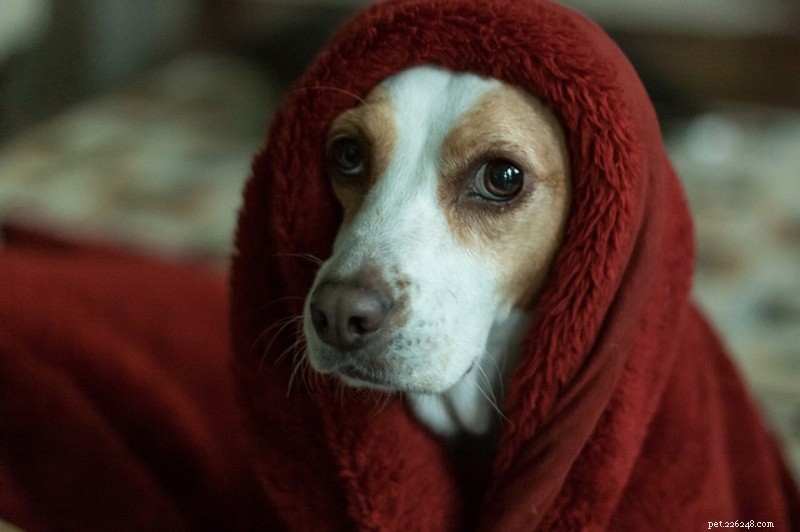
De zomer is een seizoen voor rust en ontspanning, maar vaak kan het plezier van mensen onze viervoetige familieleden beïnvloeden.
Een hond kalmeren houdt in dat je leert hoe je de specifieke angst van je huisdier kunt verminderen. Angst bij honden is meestal het gevolg van een van de twee gemeenschappelijke factoren.
Hoewel het moeilijk is om je hond te laten lijden, kan het fysiek troosten van het dier soms meer kwaad dan goed doen, omdat het een positieve versterking biedt voor een angstreactie. In ernstige gevallen van hondenangst kan medicatie of gedragstherapie nodig zijn; raadpleeg uw dierenarts voor plotselinge gedragsveranderingen.
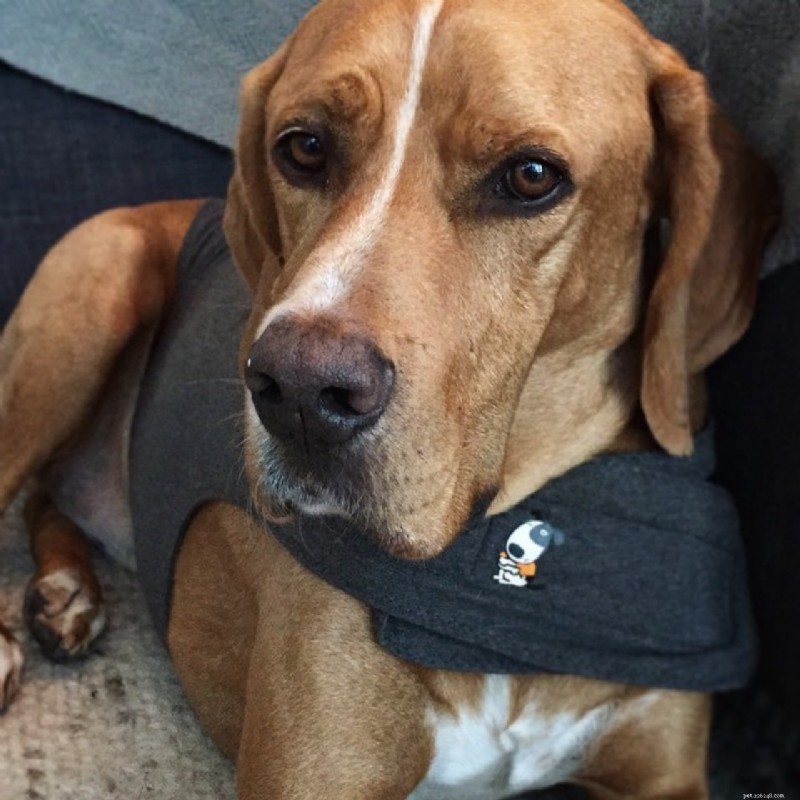
Onweer
De angst van honden voor onweer is bekend; een onderzoek door ThunderShirt, fabrikant van uitlopers van huisdieren, schat dat meer dan 17 procent van de honden last heeft van een geluidsfobie. Waarom zijn honden bang voor onweer? Dierengedragsdeskundigen hebben niet vastgesteld welk deel van een onweersbui honden het meest van streek maakt:bliksemflitsen, donderslagen of hevige wind en regen die ramen rammelen. Eén theorie stelt dat huisdieren de daling van de luchtdruk of de elektrische lading in de lucht kunnen voelen.
Donderangst bij honden kan worden beïnvloed door het ras; herdershonden en -honden hebben een hogere incidentie van stormfobie. Dit kan te wijten zijn aan inteeltkenmerken zoals snelle reflexen en niet-agressie, die ertoe leiden dat honden emoties onderdrukken na een intense reactie op onweer. Huisdieren met een voorgeschiedenis van misbruik of verlating hebben ook meer kans op een donderfobie en meer angst in het algemeen. Dit kan te wijten zijn aan een negatieve associatie met het geluid van de donder of aan een gebrek aan socialisatie. Vooral reddingshonden ervaren meer angst vanwege de stressvolle aard van opvangcentra of traumatische gebeurtenissen uit het verleden.
Systematische desensibilisatietherapie wordt aanbevolen voor honden met angst voor geluidsassociatie. Dit omvat het nabootsen van de onweersbui-omgeving op kleinere schaal, zoals het spelen van donderslagen op een laag volume of het nabootsen van bliksem met een zaklamp. De hond wordt alleen beloond als er geen tekenen van angst of angst zijn, waardoor de negatieve associatie van het geluid geleidelijk afneemt. Always consult your vet before beginning any new lifestyle changes. If therapy is not an option or shows no improvement, medication may be required.
Fireworks
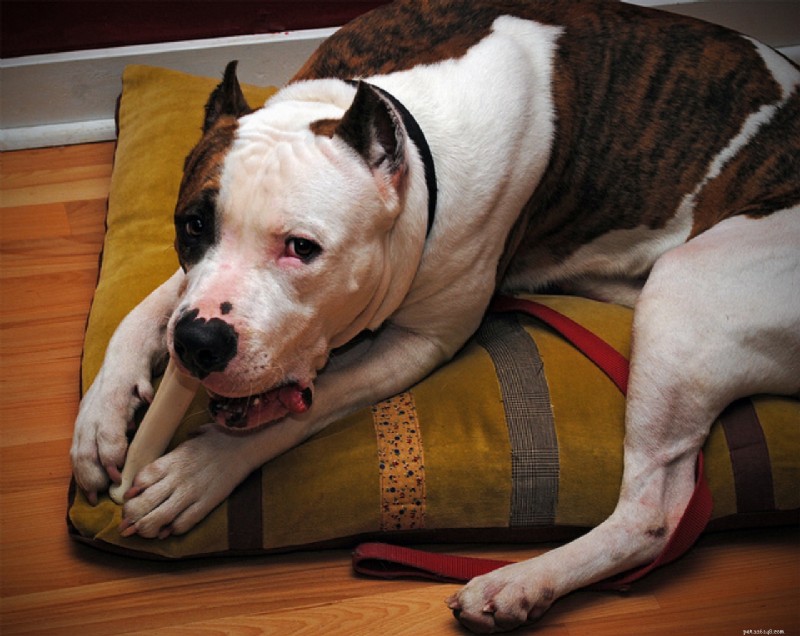
Every 4th of July dogs across the nation cower in terror. Dogs and fireworks are mortal enemies, thanks to the pyrotechnics’ low decibel sound. To human ears, fireworks are a dull whine – dogs hear, see and smell the pretty lights as a mortal danger to them. Dog Whisperer Cesar Milan says a dog’s anxiety response is “a survival instinct,” designed to keep the animal alive in potentially dangerous situations.
Fireworks can be even scarier to dogs than thunderstorms, which at least provide animals with some warning signs of the impending noise. (Remember, dogs feel the drop in air pressure and increased electrical charges that precipitate a thunderstorm.) It is possible to retrain a dog’s natural fear instinct through repeated exposure, as in the previously discussed systematic desensitization therapy. For best results, start when your pet is a puppy and acclimate him to a variety of loud noises including car horns, children yelling, and motorcycles.
If all else fails, try your best to comfort or distract your dog. Before the fireworks begin, create a soothing environment for your pup, including a favorite bed or crate as well as toys. Rawhide chews or puzzle toys can distract dogs for hours, or put on some scientifically-sound music for dogs. If your pet is accident-prone, take a potty break before you settle in or lay some absorbent potty pads down as a precaution.
Separation anxiety
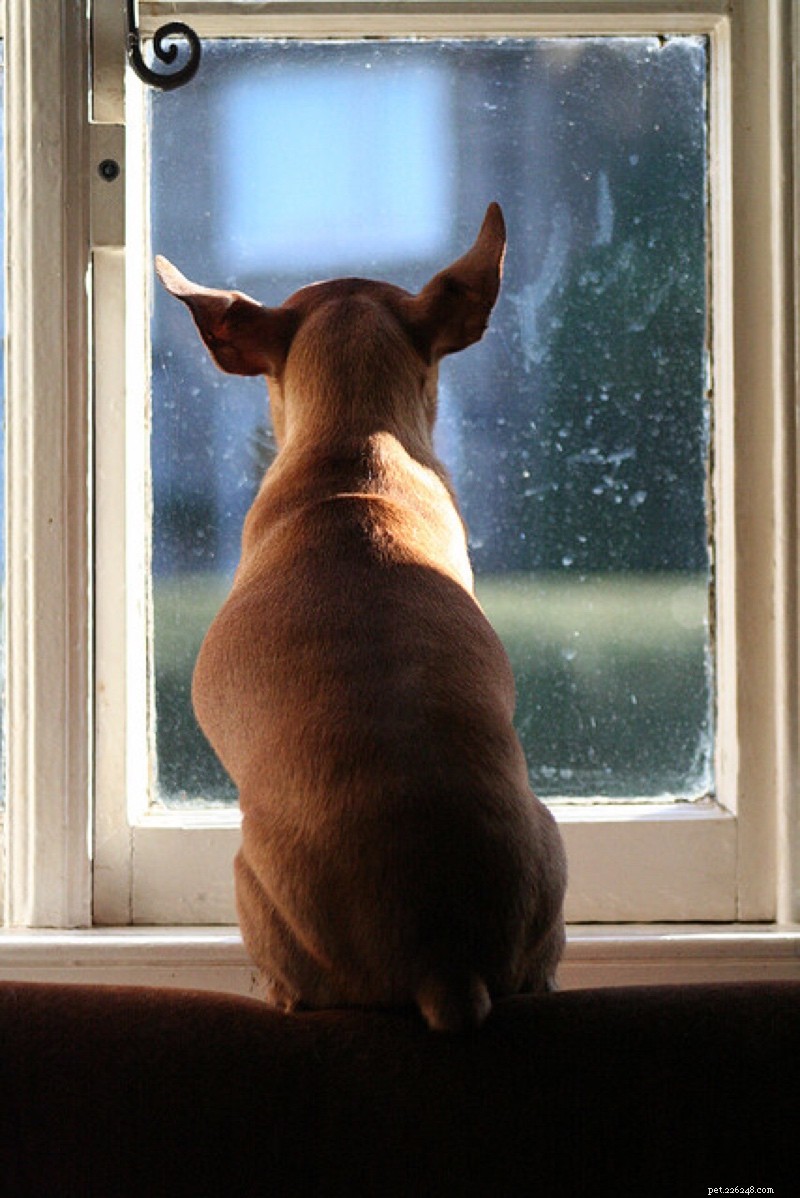
This type of dog anxiety is very common, especially among dogs who were previously surrendered or abandoned. Dogs are very social animals who typically prefer living in “packs,” be the members human, canine or even feline. When a dog with separation anxiety is left alone, he may believe he has been abandoned again; often this results in destructive behaviors as the panicked pet attempts to escape or look outside.
Young, male, mixed-breed dogs are the most likely to develop separation anxiety. Animal behaviorist Dr. Barbara S. Simpson denies any relationship between so-called “spoiling” a pet and the development of separation anxiety, but does note that close dog/pet parent relationships are more likely to result in separation anxiety.
With the rise of the pet-friendly workplace, many pet parents find taking their dog to work solves the issue. Doggy daycare or adopting a canine companion may reduce the feelings of isolation that lead many dogs to engage in destructive acts like soiling the carpet or chewing furniture. A long-term solution involves the pet parent modifying his or her routine; dogs learn and associate behaviors like putting on shoes with leaving the house. Dr. Simpson suggests practicing “graduated departures,” like putting on shoes and then returning to the couch for a while. In an American Veterinary Medical Association study, 62 percent of dogs with separation anxiety improved through simple acts by pet parents – no punishment for destructive behaviors, providing a chew toy before leaving, and increasing exercise.
Social anxiety
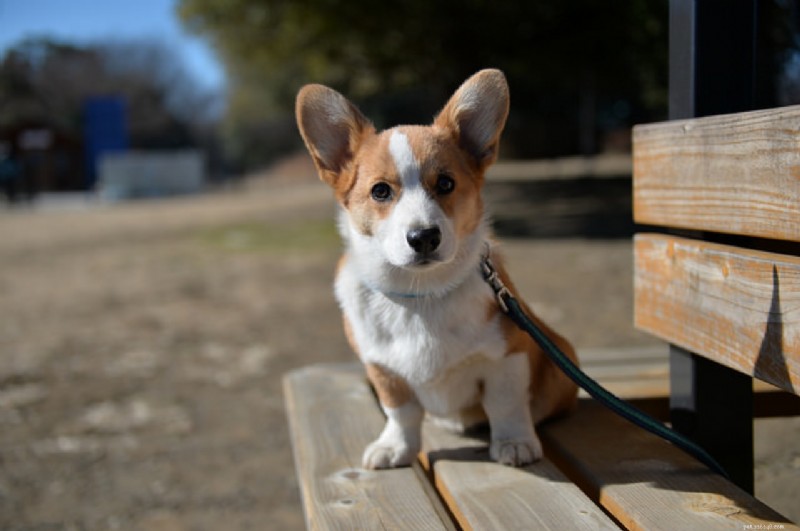
Even dogs find themselves uneasy in some social situations. Just as select pets are aggressive, others are shy and suffer from social anxiety. Often the two overlap – a scared dog is more likely to lash out – with anxiety-related fear leading to aggression. Before placing your pet in an unknown environment, consider how he or she deals with certain stressors. Crowds, children, other dogs, food smells, and loud music are all very stressful for a dog. Symptoms of dog anxiety include trembling, urination, growling, and classic body language signs like a tucked tail, pulled back ears, and avoiding eye contact.
Social anxiety in dogs can be caused by a variety of factors, including a traumatic event like a dog fight. Cesar Milan notes that the issue sometimes relates to poor self-esteem, recommending confidence-building activities and interactions with other dogs. Throw a ball for your pet, giving praise when he returns with it; even providing treats for a successful potty break will boost self-esteem.
Lack of socialization is usually the culprit, says author and dog trainer Victoria Stillwell of It’s Me or the Dog . “When you have a puppy, you have to introduce it to 100 new experiences and all different kinds of people and…dogs in a lot of different environments.” Start slow with adult dogs, gradually introducing stressful sounds and rewarding non-fearful responses. At the dog park, redirection is key to helping your pet stay calm. Introduce a tennis ball or run some obstacles, introducing one dog at a time to your pet. Ask other pet parents with solo leashed dogs if you can introduce your pet one-on-one for a practice round.